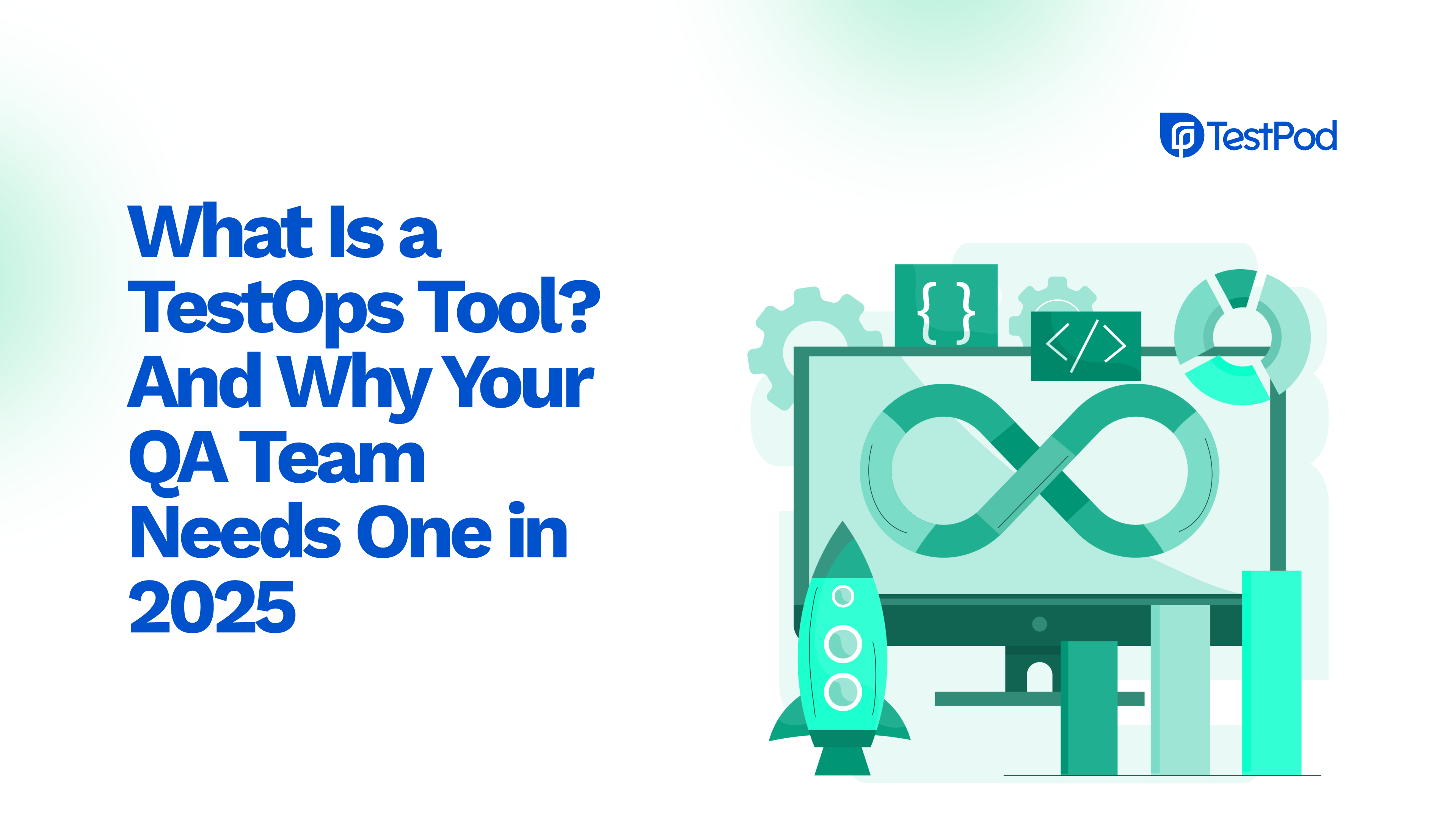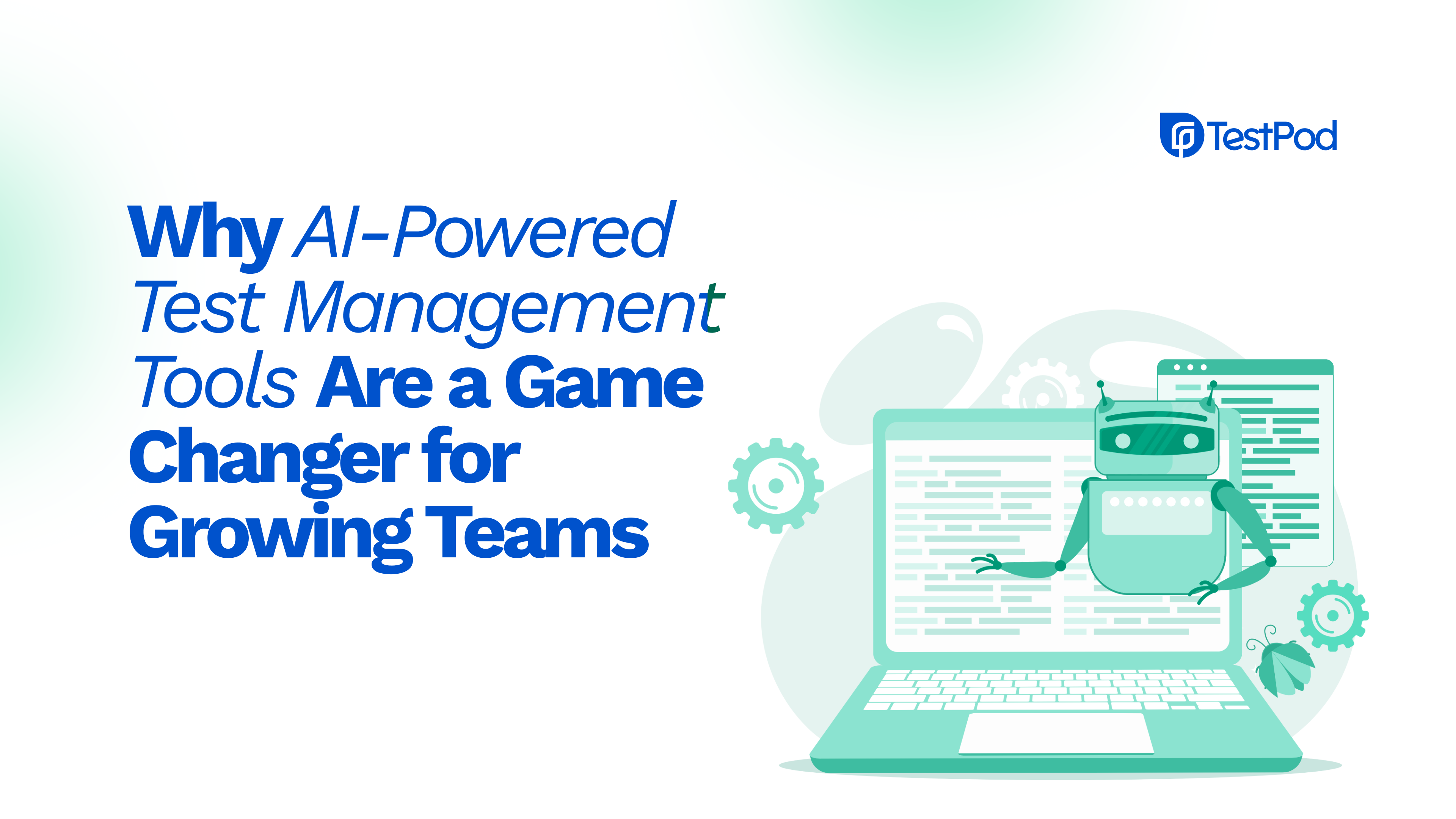Software delivery in 2025 doesn’t look anything like it did even five years ago. Releases that once rolled out quarterly now ship weekly or daily. For QA teams, that shift means testing can no longer be treated as a single phase at the end of the SDLC.
Testing is now an always-on discipline.
That’s where TestOps comes in.
If DevOps redefined how we build and ship software, TestOps is redefining how we test it. And in today’s world of agile development, DevOps pipelines, and customer-first releases, a TestOps tool isn’t optional anymore; it’s essential.
What Is TestOps, Exactly?
TestOps (Testing + Operations) is the practice of managing, scaling, and optimising testing in the same way DevOps manages development and operations.
In simple terms, think of it as “DevOps for QA.”
A TestOps tool makes this possible by providing a single platform where QA teams can:
- Integrate testing directly into CI/CD pipelines.
- Manage test cases, runs, and environments at scale.
- Use analytics to spot trends, reduce flaky tests, and prioritise critical paths.
- Enable collaboration across developers, QA, product managers, and beyond.
- Scale testing to the cloud, across devices, browsers, and APIs.
The result? QA stops being a bottleneck and becomes a true partner in delivering high-quality software at speed.
Why QA Teams Need a TestOps Tool in 2025
Here’s why TestOps has moved from “nice-to-have” to must-have:
1. Testing at the Speed of Agile & DevOps
Agile sprints are shorter. Hotfixes can ship daily. Without TestOps, QA becomes reactive, always trying to catch up.
A TestOps tool integrates seamlessly with CI/CD, running automated tests on every build so bugs are caught before they reach production.
2. Centralised Test Management
Too often, test assets are scattered: some in Jenkins, some on GitHub, some on QA laptops. This creates chaos.
A TestOps tool centralises everything: test cases, runs, and results, so everyone has visibility, from QA engineers to PMs.
3. Smarter Use of Automation
Automation isn’t the problem; maintaining automation is. Script-heavy frameworks produce flaky tests and noisy failures.
TestOps platforms improve automation ROI by:
- Reducing false positives with AI-driven stability.
- Prioritising tests that matter most.
- Scheduling suites intelligently for efficiency.
4. Collaboration Across Teams
Quality is no longer just QA’s job. Developers, PMs, and even customer success teams all need visibility into testing.
TestOps tools provide dashboards and alerts that make test results understandable to all stakeholders, not just engineers.
5. Scaling with Cloud & AI
Remote, distributed teams need scale without infrastructure headaches.
TestOps platforms run tests in the cloud across browsers, devices, and APIs, and AI enhances debugging, root-cause analysis, and reporting. This shifts QA from reactive firefighting to proactive quality engineering.
What Makes a Good TestOps Tool?
Not all TestOps solutions are created equal. In 2025, a good TestOps tool should deliver:
- Test Case Management: Organise, version, and link test cases.
- CI/CD Integrations: Jenkins, GitLab, GitHub Actions, CircleCI, etc.
- Multi-Platform Support: Web, mobile, API, and communications testing.
- AI Assistance: For test creation, debugging, and optimisation.
- Cloud Scalability: Run thousands of tests in parallel without bottlenecks.
- Collaboration Features: Dashboards, notifications, and team insights.
If your tool doesn’t check these boxes, it’s not TestOps, it’s just test automation.
TestOps in Action: How TestPod Fits
At TestPod, we designed a modern TestOps tool for how QA actually works in 2025:
- AI-powered test case creation: Generate structured tests instantly from plain English.
- Flexible execution: Run tests locally or in the cloud.
- CI/CD integrations: Keep coverage continuous, every time code is deployed.
- AI-assisted debugging: Understand failures and fix them faster.
- Clear dashboards: Give every stakeholder, from QA to product managers, instant visibility.
Instead of juggling multiple tools for test cases, automation, reporting, and integrations, TestPod consolidates it all into one powerful TestOps platform.
Final Thoughts
The pace of software delivery isn’t slowing down; it’s accelerating. The question is: will your QA team scale with it, or stay stuck in manual processes and siloed automation?
A TestOps tool is no longer a luxury; it’s the backbone of modern QA.
With tools like TestPod, QA teams can:
- Keep pace with Agile and DevOps.
- Eliminate bottlenecks.
- Improve collaboration.
- Deliver quality at scale.
Ready to see how TestPod can transform your QA operations?
Get started with TestPod today or join our live demo.
 Wednesday at 2 PM (UTC +1)
Wednesday at 2 PM (UTC +1)



